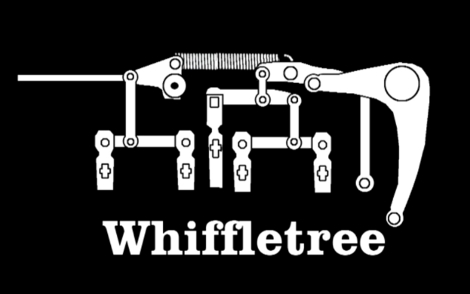
This isn’t a hack. But it is a decidedly interesting piece of mechanical technology. The Whiffletree shown above is a way to turn binary data into a mechanical analog value. [Bill Hammack] explains how this assembly is used in a typewriter and how a whiffletree can convert binary data to a set of analog outputs.
These linkages are what makes an IBM Selectrix Typewriter work. You know, the one with the globe stylus instead of individual hammers for each key? [Bill] uses the typewriter as the example in his illustrations that show how each bit of data positions the output in a predictably different location. We’re familiar with other mechanical representations of binary data but converting to an analog value mechanically is a new concept for us. Lukily, the videos that [Bill] put together are fantastic at explaining the concepts. Not surprising, since he is a professor at the University of Illinois at Urbana-Champaign . See them both after the break.
[youtube=http://www.youtube.com/watch?v=bRCNenhcvpw&w=470]
[youtube=http://www.youtube.com/watch?v=G_SC7oWL78A&w=470]
[via Tinkernology and Make]
















Cool, now build an analytical engine.
*boom**boom**boom**boom**boom*MTVNews
a whiffle tree makes me think of a pale yellow plastic tree with holes in it
Selectric, not Selectrix.
I’d like to see mechanical ADC with binary or hexadecimal output (i can imagine ADC with unary output :-)
I really dont see this as digital to analog. More like a parallel to serial converter or a mechanical logic gate. Or for that matter since the input can be analog it could be something like an op-amp.
I rebuild player pianos. The 1913 patent Duo Art reproducer has two 4-bit DAC’s, to control the left and right hand part loudness. They are weighted in a precise and tweak-able 1-2-4-8 scale! I have pics of the rebuilt and one in oldie state. They look like a baby Borg box.
Mechanical A/D has been around for a long time. Ever see a thermostat?
What’s that? You want more bits?
Ever seen a thermostat with an anticipating circuit?
What? You want even more bits?
I’m too tired to look for prior art, but I guarantee that someone has converted pressure, speed or weight into a linear scale using a bellows or beam arrangement, and then connected it to a multiple-cam roller using gear and tooth mechanisms. The cams were used to open/close multiple gates or valves. This will date back to the early 1900’s, at least.
You could set the cams for binary easily enough.
I don’t think a lot of binary math got done until the 40s/50s, as base 10 and 12 were all the rage.
By 1945, there were mechanical equivalents of all electronic functions, but once we mastered the use of pulse rather than linear electronics there was no point in using them for anything but the crudest and most trivial of problems.
I urge you (the curious ones, anyway) to read Charles Babbage’s late 19th century treatise on mechanical computing. He was quite ahead of his peers, but the machinists had 50 years to go before they could catch up.
Awesome stuff. now I really want to build myself a printer out of an old typewriter.
It says the typewriter is “based on” the wiffletree design. Never said it was the first to use it or invented it…
And as digital/analog, Binary would be digital, mechanical movements would be analog. Binary code being interpreted as mechanical movements is digital-analog conversion.
“This isn’t a hack.”
+
“filed under: HackIt”
It was a hack of the original designers, and it might help you one day when you are trying to hack something together.
A thousand meat pies to the first gentlefolk to build a mechanical Arduino clone.
I wish he’d made a demo of the other part, the
ball rotator mechanism.
I have a pre-modified Selectric from one the first 1971 Redactron Text-Computer.
It already has Solenoids and Data-Lines – one of my next Projects.
I got the System 20 yrs ago and had it rest in the Barn since them.
Surprise – Powered it up a few weeks ago and runs as Typewiriter without any cleaning or lubricating!
I was trained on this machine and it is a wonder to behold. The other part that is a clever design is the universal joint under the golf ball which I used to cal the “dog bone” due to it’s shape. Two metal bands completed the action to rotate and then tilt and finally detent the ball. I wish I had kept one. As well as the console for IBM 360s’ (370’s had a matrix printer) the NCR 446 used one.